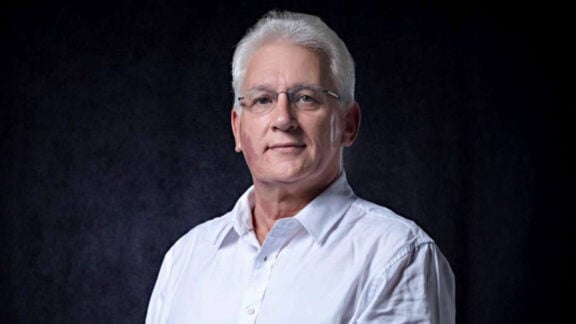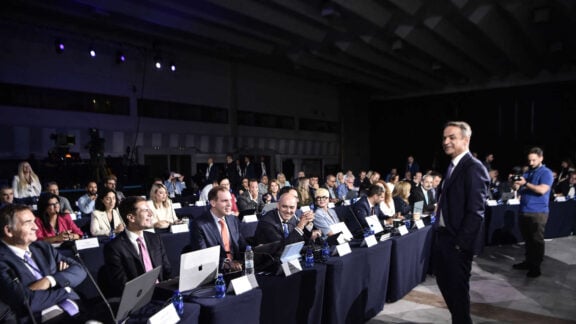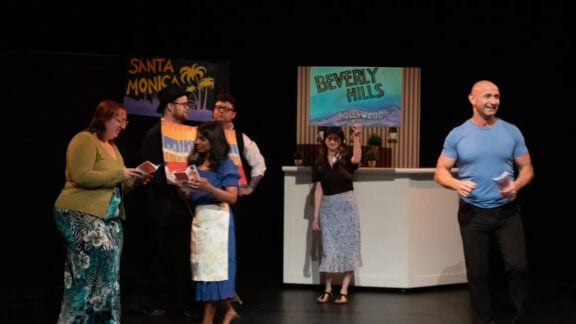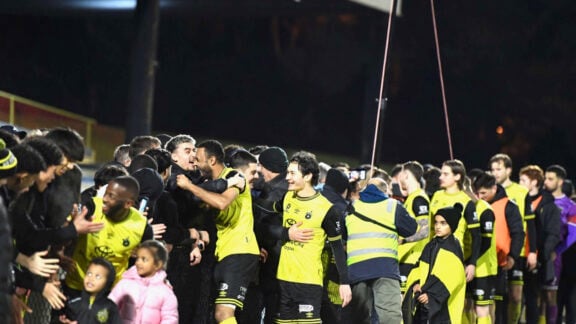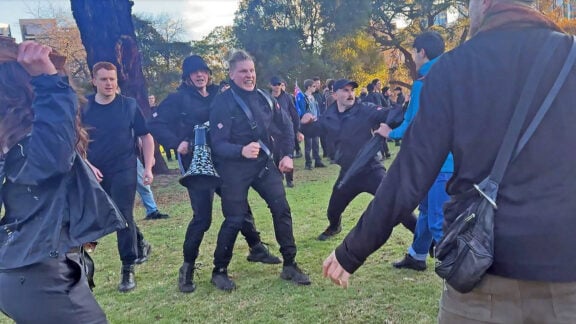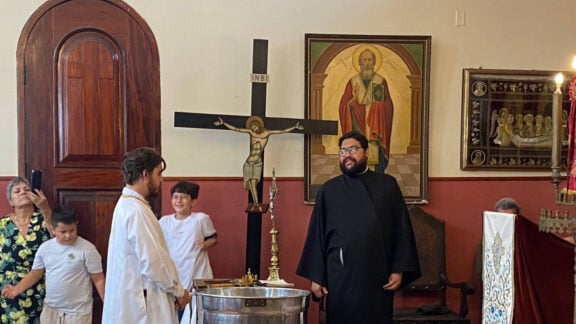Anaïs Mitchell’s Hadestown, lauded for its musical ingenuity and socially conscious storytelling, has captivated audiences with its reimagining of the Orpheus and Eurydice myth in a postapocalyptic, Depression era setting. Yet beneath the acclaim lies a set of aesthetic and ideological concerns that merit further examination: specifically, the production’s orientalist and tokenistic engagement with Greek culture. This is not a question of bad faith or deliberate misrepresentation, but rather of how cultural frameworks are repurposed in ways that, however unintentionally, risk flattening the traditions from which they originate.
Edward Said’s foundational framework in Orientalism, describes the tendency of Western discourse to appropriate, stylise, and commodify non-Western cultures in ways that reinforce dominant cultural hierarchies. While his focus was primarily the Middle East, his framework also serves to illuminate how ancient Mediterranean cultures, Greek in particular, are often exoticised and selectively appropriated in modern Western media. Paradoxically, though Greece is credited as a cornerstone of Western thought, it is also depicted as an archaic or mystical Other, a kind of lost world used to lend timelessness and gravitas to contemporary narratives.
In Hadestown, this process of exoticisation manifests in two significant ways: abstraction and deracination. Importantly, these dynamics appear to be largely subconscious. There is no overt intention to misrepresent or diminish Greek culture. Rather, Hadestown exemplifies a recurring tendency in Western artistic production to treat classical antiquity as a symbolic archive from which motifs can be drawn and repurposed, often without sustained engagement with the philosophical or metaphysical structures that gave those motifs their original significance. In this sense, the orientalism at play is not a deliberate caricature, but a habitual narrative pattern.
The myth of Orpheus and Eurydice, for instance, is transposed from its religious and philosophical roots into a stylised American context. Gone are the Orphic rituals, the eschatological themes, the metaphysical resonances of descent and return. Instead, we encounter a Depression era industrial dystopia in which Hades is a tyrannical capitalist, Eurydice is a woman driven by hunger, and Orpheus is an idealistic singer songwriter. These transformations are not inherently flawed; creative adaptation is essential to myth’s survival, but they raise questions about what is lost in the process. When the myth is lifted wholesale into a modern idiom, how much of its original symbolic architecture is retained?
The answer, it seems, is possibly relatively little. Hadestown makes extensive use of mythological names and themes, but rarely delves into the cultural and cosmological systems from which they arise. In this, it echoes what bell hooks describes in Black Looks: Race and Representation as “eating the Other,” an aesthetic consumption of cultural difference that enriches the dominant culture without engaging the worldview of the marginalised one. Greece, within Hadestown, is less a place or history than a poetic atmosphere. The mythological figures operate largely within a Western narrative logic, detached from the ritual, linguistic, and ethical frameworks that once sustained them.
This tendency is reinforced by the musical language of the production. While the score’s fusion of folk, blues, jazz, and gospel is musically innovative and thematically resonant within an American context, it makes no reference to the musical traditions of Greece, whether ancient modes, Byzantine chant, or regional folk idioms. The choice to anchor the sonic world entirely in Americana underscores the show’s recontextualisation of the myth as a story of modern hardship and hope. Again, this is not a failure of artistry, but it does mark an identifiable shift away from any engagement with Hellenic musical or spiritual expression.
Consider, for instance, the ritual function of music in Orphic tradition. In ancient Greece, Orpheus was not merely a poetic figure but a hierophant, a mediator between worlds, whose music was a form of divine utterance. His lyre had cosmological resonance, not simply emotional appeal. His myth’s potency lay not in personal sentiment, but in its evocation of a sacred cosmology, an ordered vision of life, death, and the soul’s journey. In Hadestown, music is powerful, but it is largely metaphorical. It uplifts, consoles, and persuades, but it no longer speaks across ontological thresholds. The audience is moved, but not transformed.
Treated thus, Greek mythology becomes a set of suggestive signs, familiar names, archetypes, and tropes, that decorate rather than define the work. Roland Barthes notes in Mythologies, that myth can function as “a type of speech” that naturalises cultural constructions. In Hadestown, the myth of Orpheus becomes a vessel for universalised messages about love, loss, and resistance, valuable themes, certainly, but ones that are unmoored from their specific historical and cultural contexts.
This aesthetic approach extends into the show’s visual and performative language. While the characters bear Greek names, they are costumed and staged in idioms that owe little to Greek tradition. The Fates echo vocal trios of a past era, Hermes appears as a narrator in the blues tradition, and Hades’s domain is imagined as a factory town. These inspired choices successfully serve the narrative’s political themes, however they also may subconsciously contribute to a broader tokenism in which cultural symbols are retained primarily for their exotic appeal. In “The Spectacle of the ‘Other’,” Stuart Hall indicates how gestures of this nature may often reduce cultural difference to aesthetic surface, stylised, decontextualised, and comfortably assimilated into dominant narratives.
This is the paradox at the heart of Hadestown: it seeks to critique capitalist systems while borrowing a mythic framework in ways that risk reinforcing the very patterns of cultural dominance it critiques. In reframing Greek myth through a Western industrial lens, ingenious as that undertaking may be, the production inadvertently may be reproducing a colonial logic in which non-Western cultural forms are adapted to suit Western moral and aesthetic frameworks. The myth becomes a vehicle for broadly humanist themes, but its Hellenic specificity fades.
Postcolonial theory further serves to illumines this phenomenon. Homi Bhabha, in The Location of Culture, describes colonial discourse as producing subjects who are “almost the same, but not quite.” Hadestown echoes this dynamic by rendering Greek myth recognisable enough to be accessible, but not so specific as to challenge dominant cultural assumptions. The result is a kind of cultural palatability: the myth becomes familiar, marketable, and while undeniably emotionally potent, distanced from its origins.
Moreover, one might consider how this dynamic parallels similar trends in the representation of other cultures within the canon of musical theatre. From the orientalist spectacle of The King and I to the appropriation of African diasporic spirituality in The Lion King, Broadway has long relied on the incorporation of non-Western mythologies and aesthetics to enrich its narratives. What distinguishes Hadestown is its presentation as politically progressive, which may obscure the structural conservatism embedded in its approach to myth. In this context, its artistic achievements undoubtedly deserve celebration, but also critique.
In this regard, Gayatri Chakravorty Spivak’s concept of “epistemic violence,” articulated in “Can the Subaltern Speak?” and referring to the erasure of marginalised forms of knowledge through processes of representation that impose dominant frameworks, also assumes relevance. Hadestown, by translating Greek myth into a largely Western idiom, enacts a soft form of this violence, not by silencing outright, but by rearticulating cultural material in ways that obscure its indigenous logic. It does not provide Greek myth with an opportunity to speak on its own terms, but rather within paradigms that are already familiar to a Western audience.
None of this is to suggest that adaptation is inappropriate or undesirable or that the work itself is not remarkable. On the contrary, reimagining myths is one of the ways cultures remain alive. But adaptation carries responsibilities. When a myth is lifted from one context and placed into another, the process should ideally involve an awareness of what is being displaced, and a sensitivity to the symbolic systems at play.
One might ask: what would a more dialogic approach to adaptation look like? It might begin with a deeper engagement with the source culture’s own articulations of myth. It could include collaborations with scholars, artists, and musicians from within that tradition. It would involve not only borrowing, but listening. And it would acknowledge the specificity of the mythic voice, resisting the impulse to universalise what is, at its core, culturally rooted. Assuming of course, that there is a particularly Hellenic way of viewing such myths…
Hadestown succeeds in many of its ambitions. It is musically rich, emotionally compelling, and thematically urgent. Nonetheless, its use of Greek mythology deserves critical reflection. It demonstrates how even the most progressive art can carry within it unexamined habits of cultural appropriation, and how easily cultural depth can be replaced by aesthetic resonance. Perhaps it is not enough to speak the names of gods; we must also ask what worlds those names once sustained.
In this sense, Hadestown offers an opportunity to reflect on the ways myth, while powerful and resonant across cultures, carries meanings that are intimately tied to place, tradition, and cosmology. Its reimagining of Orpheus and Eurydice illustrates how ancient narratives continue to inspire new expressions, even as they change shape. In tracing these metamorphoses, we are reminded of the importance of cultural specificity, not as a constraint, but as a source of richness that deepens our engagement with the stories we retell.

